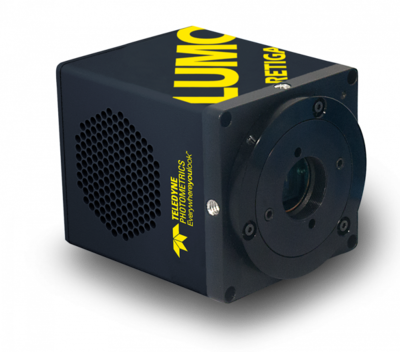Plant Bioluminescence
Dr. Matt Jones
Institute of Molecular Cell & Systems Biology, University of Glasgow
Background
Dr. Matt Jones leads a group of circadian biologists working at the University of Glasgow, who research internal circadian rhythms in plants and how they respond to light at different times of day, with an aim to manipulate these responses and improve plant growth and crop yields. Plants typically use their circadian rhythm to measure day length and enable appropriate responses to environmental cues. Dr. Jones is studying this system using a light source to illuminate plant samples, modifying the colour, duration, intensity, and timing of the illumination and determining any changes in response.
Dr. Jones uses transgenic plants that excess firefly luciferase, a light-emitting enzyme, which enables these plant samples to emit endogenous light. This light is measured using bioluminescence, collecting the emitted light over a long exposure (>10 minutes). Changes in emitted light are measured over several days, determining the circadian rhythms of these samples.
Figure 1: Image shows high throughput imaging of bioluminescence signals from hundreds of plants
(each bright spot is a single plant sample) across long exposures, taken with the Retiga LUMO CCD.
Challenge
The lab of Dr. Jones uses bioluminescence imaging to study plant responses to light, which typically involves very long exposures (20 minutes and more) in order to collect luminescence from plant subjects over time. CMOS cameras face issues with dark current build-up when operating at such long exposures, meaning CCD technologies are required.
Hundreds of plant samples need to be imaged at once, within a dark box (to avoid autofluorescence). This means a suitable CCD would need a large field of view (FOV) and a low noise, in order to maximize throughput and collect bioluminescence from a large number of plants over the long term, in ultra low light conditions.
Dr. Jones commented on the need for throughput, "It has to be high throughput as we have to capture every plant in every image, automating this with a camera makes this a lot easier... the camera is running non-stop for at least seven days."
It’s as sensitive as the other systems that we have used that are a lot more expensive, so essentially it’s a no-brainer to buy LUMOs!
Dr. Matt Jones
Solution
The Retiga LUMO CCD is the Teledyne Photometrics answer to ultra-low light luminescence imaging, specifically designed to capture these signals using long exposures up to 60 minutes. Combining this with deep sensor cooling, ultra-low noise modes, advanced correction technologies (Defective Pixel Correction and Dynamic Dark Frame Correction) and a 16 mm diagonal FOV, the LUMO is a powerful choice for bioluminescence imaging.
Dr. Jones spoke to us about his experience with the LUMO, "We went for the LUMO because we wanted to guarantee the bioluminescence signal... One of the benefits of using the LUMO is that we can control it using our open-source software... the noise reduction features have been awesome, it's worked really well."
"We have exclusively been using LUMO cameras in our Glasgow lab, it's very difficult for competitors to match [Teledyne Photometrics] on price now that we have our own imaging system, the flexibility is very useful for me... and the support you provided was great when we were looking for extra camera settings."

Learn More About The Retiga LUMO
Download This Customer Story
